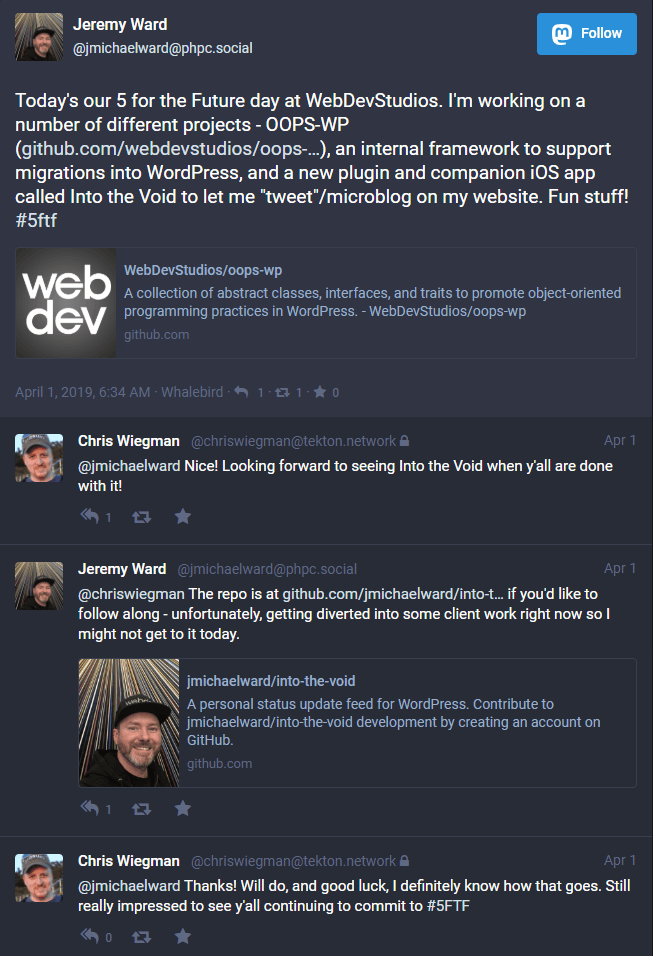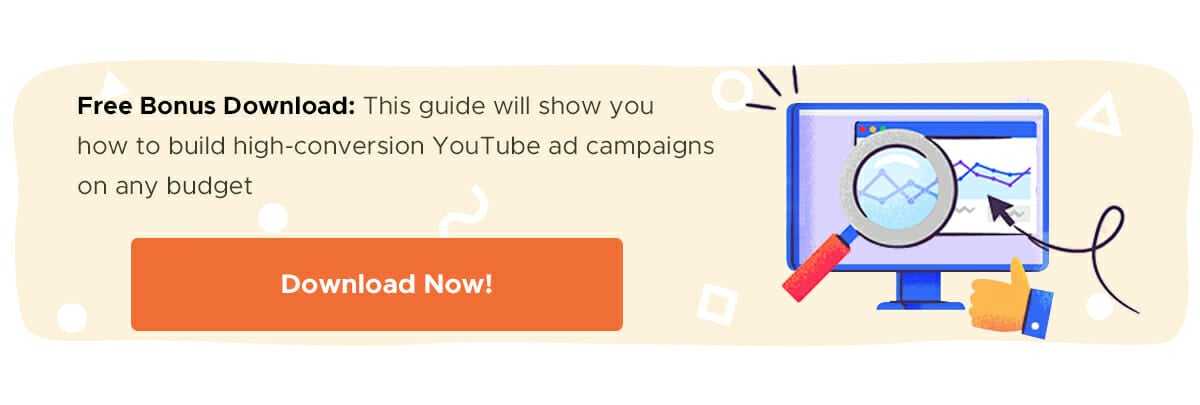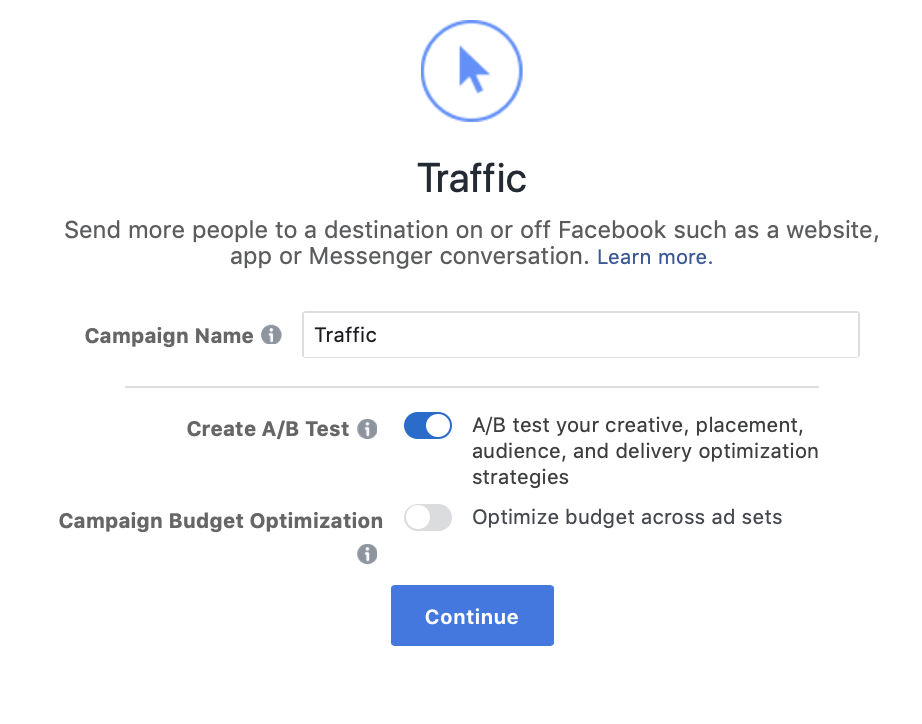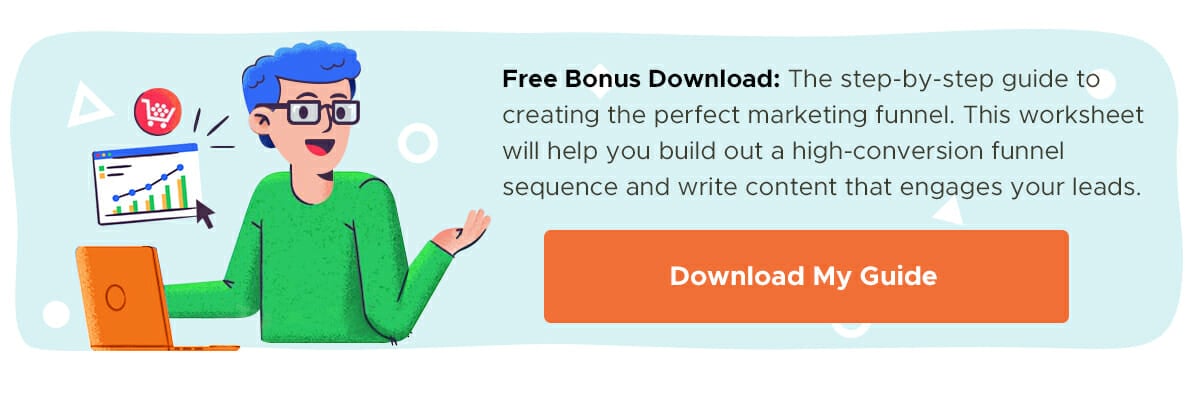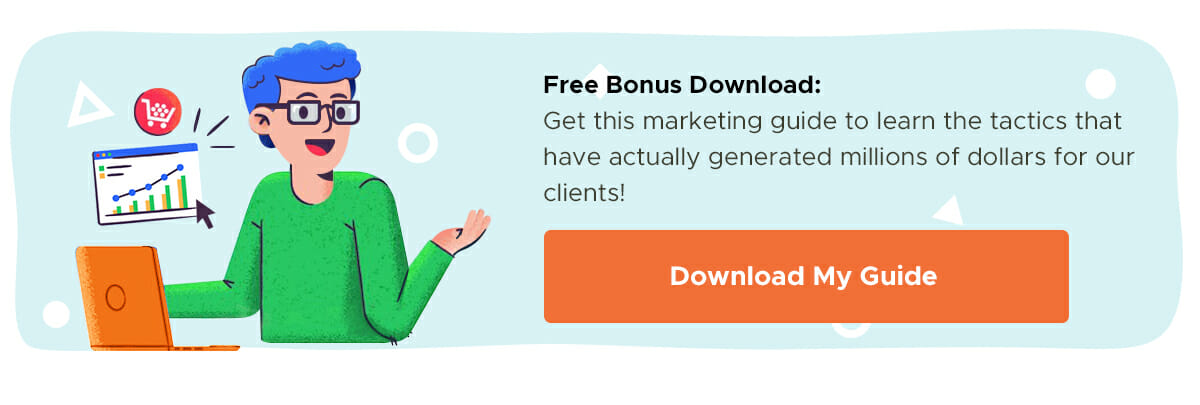Tuesday 30 April 2019
Facebook loves Stories, just not in Workplace

Facebook relased an app redesign today, and so did Workplace by Facebook, and while Facebook loves Stories, the workplace may not be the place for them.Read More
from Social – VentureBeat http://bit.ly/2GPpMSV
Facebook cares about privacy, for realsies, Zuckerberg swears

Facebook kicked off F8 2019 by pledging a new privacy-focused social network. Those claims could be believable this time, but for different reasons.Read More
from Social – VentureBeat http://bit.ly/2vrgNCn
WhatsApp gains Product Catalogs and Account Kit support

At its annual F8 developer conference, Facebook announced new features headed to WhatsApp, the world's largest messaging platform.Read More
from Social – VentureBeat http://bit.ly/2V7rlWg
Instagram tests making ‘like’ counts private in Canada

Facebook-owned Instagram will begin hiding likes for some users in Canada as part of a small test, it announced at F8 2019.Read More
from Social – VentureBeat http://bit.ly/2WeErxN
Instagram introduces new shopping, donation, and camera features

At its annual F8 developer conference, Facebook announced a slew of features heading to Instagram, including curated product tags and donation stickers.Read More
from Social – VentureBeat http://bit.ly/2DDJGj4
Facebook redesigns its web and mobile apps

At Facebook's annual developer conference in San Francisco, it announced a complete redesign of its web and mobile clients.Read More
from Social – VentureBeat http://bit.ly/2UPDAlv
Facebook Messenger bots can now book appointments

Facebook Messenger's bot platform launched an appointment-booking feature in beta, one of many new features, at the F8 developer conference today.Read More
from Social – VentureBeat http://bit.ly/2URGA0K
Wild Wednesday: Five for the Future Happens Tomorrow
In the past, we have aimed to dedicate our Five for the Future days to Fridays, but since giving back should not be limited to any specific day of the week, really, we’ve opted to hold our next Five for the Future tomorrow, May 1, 2019. Let’s just consider it a wild Wednesday.

Having just returned from our company retreat, known as WDS Camp, with one of our team members heading straight to Hack for a Cause upon landing home, our team is rested, recharged, and pumped up about giving back. Hey, it’s what we do! Here’s a taste of how we gave back last month to Five for the Future:
Its #5FTF day at @webdevstudios and that means doing some work on our wd_s theme and poking around at @gatsbyjs. It also means working downstairs with the TV on in the background. Good morning, Phantasm
pic.twitter.com/9WQ8jqBuLb
— Corey M Collins (@coreymcollins) April 1, 2019
Kicking off another #5ftf @maintainn / @webdevstudios! Working on my Discogs plugin and then on a required fields plugin. So much fun and a great way to give back to #wordpress
— Chrispian H. Burks (@chrispian) April 1, 2019
It’s another #5FTF at @webdevstudios so ask any #WordCamp-related questions here and I’ll be glad to answer!
— Meagan Hanes
(@mhanes) April 1, 2019
My first #5FTF day at @webdevstudios means I get to finish our #Wapuu sticker and work on some content for #WordCampIloilo2019. THIS IS AWESOME!!! pic.twitter.com/xH2Bro1GLb
— JC Mae Palmes (@jpalmes) April 1, 2019
Today for #5ftf, I’m going to be working on updating a WP plugin that backs up your Twitter.
No particular reason. https://t.co/CQu0v9BKNl
— Evan Hildreth (@oddevan) April 1, 2019
Do you lead a remote team? If so, what are some of the challenges that come with leading a team of people that are distributed across the globe? Today I’ll be working on a blog post that outlines a few tips for Leading a Remote Team #5FTF #remotelife #leadership
— Cristina Holt (@cristinaholt416) April 1, 2019
Today for the #5FTF at @webdevstudios I’m going to be working on some exciting thing for @WordCampUS! Which means I’ll be on the phone all day trying to figure out St. Louis. pic.twitter.com/YKshmzhHz0
— ᴊᴏᴅɪᴇ ʀɪᴄᴄᴇʟʟɪ (@Jodie_Riccelli) April 1, 2019
Today is 5 For The Future day at @webdevstudios – gonna work on some translation and authentication stuffs for wp-strava #5FTF pic.twitter.com/zY87DwJ7gy
— Justin Fœll (@justinfoell) April 1, 2019
Still wondering what the heck Five for the Future is and what has it got to do with WordPress? Read the original blog post that started the initiative.
Five for the Future isn’t just for us. YOU can participate, too! Read this article for ways to contribute and follow us on Twitter, plus the official #5ftf hashtag, and keep up with our contributions.
Giving back to WordPress and its community is important to us. We look forward to our Five for the Future day tomorrow and we thank you for the support.
The post Wild Wednesday: Five for the Future Happens Tomorrow appeared first on WebDevStudios.
from WebDevStudios http://bit.ly/2GTBM79
How to check for duplicate content to improve your site’s SEO
Publishing original content to your website is, of course, critical for building your audience and boosting your SEO.
The benefits of unique and original content are twofold:
- Original content delivers a superior user experience.
- Original content helps ensure that search engines aren’t forced to choose between multiple pages of yours that have the same content.
However, when content is duplicated either accidentally or on purpose, search engines will not be duped and may penalize a site with lower search rankings accordingly. Unfortunately, many businesses often publish repeated content without being aware that they’re doing so. This is why auditing your site with a duplicate content checker is so valuable in helping sites to recognize and replace such content as necessary.
This article will help you better understand what is considered duplicate content, and steps you can take to make sure it doesn’t hamper your SEO efforts.
How does Google define “duplicate content”?
Duplicate content is described by Google as content “within or across domains that either completely matches other content or are appreciably similar”. Content fitting this description can be repeated either on more than one page within your site, or across different websites. Common places where this duplicate content might be hiding include duplicated copy across landing pages or blog posts, or harder-to-detect areas such as meta descriptions that are repeated in a webpage’s code. Duplicate content can be produced erroneously in a number of ways, from simply reposting existing content by mistake to allowing the same page content to be accessible via multiple URLs.
When visitors come to your page and begin reading what seems to be newly posted content only to realize they’ve read it before, that experience can reduce their trust in your site and likeliness that they’ll seek out your content in the future. Search engines have an equally confusing experience when faced with multiple pages with similar or identical content and often respond to the challenge by assigning lower search rankings across the board.
At the same time, there are sites that intentionally duplicate content for malicious purposes, scraping content from other sites that don’t belong to them or duplicating content known to deliver successful SEO in an attempt to game search engine algorithms. However, most commonly, duplicated content is simply published by mistake. There are also scenarios where republishing existing content is acceptable, such as guest blogs, syndicated content, intentional variations on the copy, and more. These techniques should only be used in tandem with best practices that help search engines understand that this content is being republished on purpose (described below).

Source: Alexa.com SEO Audit
An automated duplicate content checker tool can quickly and easily help you determine where such content exists on your site, even if hidden in the site code. Such tools should display each URL and meta description containing duplicate content so that you can methodically perform the work of addressing these issues. While the most obvious practice is to either remove repeated content or add original copy as a replacement, there are several other approaches you might find valuable.
How to check for duplicate content
1. Using the rel=canonical <link> tag
These tags can tell search engines which specific URL should be viewed as the master copy of a page, thus solving any duplicate content confusion from the search engines’ standpoint.
2. Using 301 redirects
These offer a simple and search engine-friendly method of sending visitors to the correct URL when a duplicate page needs to be removed.
3. Using the “noindex” meta tags
These will simply tell search engines not to index pages, which can be advantageous in certain circumstances.
4. Using Google’s URL Parameters tool
This tool helps you tell Google not to crawl pages with specific parameters. This might be a good solution if your site uses parameters as a way to deliver content to the visitor that is mostly the same content with minor changes (i.e. headline changes, color changes, etc). This tool makes it simple to let Google know that your duplicated content is intentional and should not be considered for SEO purposes.

Source: Alexa.com SEO Audit
By actively checking your site for duplicated content and addressing any issues satisfactorily, you can improve not only the search rankings of your site’s pages but also make sure that your site visitors are directed to fresh content that keeps them coming back for more.
Got any effective tips of how you deal with on-site content duplication? Share them in the comments.
Kim Kosaka is Director of Marketing at Alexa.com.
Further reading:
- How to optimize your local business for voice search
- How to take advantage of the latest updates to Google Search Console
- Buyers Guide: Enterprise SEO Tools
- SEO case study: How Venngage turned search into their primary lead source
The post How to check for duplicate content to improve your site’s SEO appeared first on Search Engine Watch.
from Search Engine Watch http://bit.ly/2PAKHgy
How to Expedite Product Changes in Google Organic Listings
In this post, I will cover a technique of updating organic listings using the Google Shopping API. The goal is to accelerate the impact of the Shopping feed on natural search.
The post How to Expedite Product Changes in Google Organic Listings appeared first on Practical Ecommerce.
from Practical Ecommerce http://bit.ly/2WaYUU8
8 Facebook Ad Copywriting Tricks to Maximize Conversions
Creating a successful, profitable Facebook Ad campaign is a little like baking: all the ingredients need to come together just right if you want everything to turn out well in the end. You need the right audience targeting options, the right placements, the right bid, the right offer, and the right message.
There are plenty of guides out there that can tell you exactly who you should be targeting and when, what placements you should choose, and how to stay competitive. This article is all about the last part of the equation: how to craft the perfect message and write it in a way to ensure that your ads convert.
Many people think that the image is the most important part of an ad campaign, but images only attract attention and interest; it’s the ad copy that details the offer and explains exactly why your audience needs to take you up on it immediately. The copy is what’s persuasive, and it will be what gets the click and gets the sales.
In this post, we’re going to look at 8 specific Facebook Ad copywriting tricks that will help you maximize conversions consistently across your campaigns.
1) Understand Your (Very Segmented) Audience
The first step to writing great copy is having a firm understanding of who your audience is and what their relationship with products or services like yours is. This will make it possible to write highly targeted, very relevant copy that resonates with them.
Let’s say, for example, that I saw an ad featuring grammar-correcting software. I’d immediately think “I’ve got spellcheck on Google Docs and the rest of it I know already.” But if I saw an ad for the same tool promising to speed up my output as a writer by eliminating the proofreading portion of my work, it might have my attention:
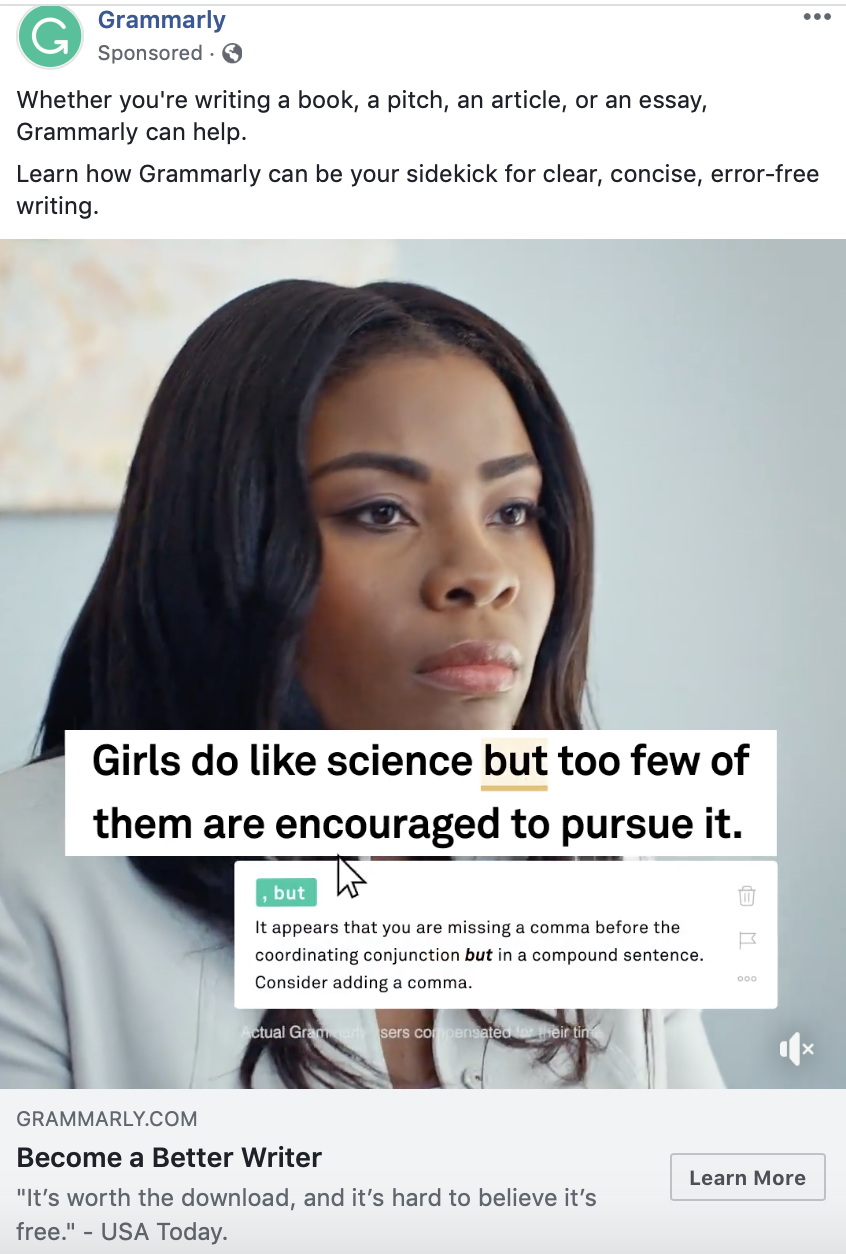
It is imperative to understand what motivates your audience and why they need a product or service like yours. It can also be helpful to understand interests and niche behaviors. Last week I saw a food delivery ad promising:
“Winter is coming… and so is your pizza.”
They knew that a large portion of their customer base was ready for the Game of Thrones premiere and found a clever way to incentivize purchases.
The more you understand your audience (and in many cases, the more segmented the audience), the better the ad – at least when it comes to Facebook Ad copy.
Dive Deeper: Attract the Right Prospects With Buyer Personas (Includes Step-by-Step Templates!)
2) Focus on Pain Points & the Emotions They Cause
Everyone has problems ranging from tiny to monumental, but with the right emotional messaging in place, even tiny nuisances can feel like enormous, overwhelming disasters that need to be solved immediately (which is how I got an “avocado saver” off a Facebook Ad that doesn’t work any better than the Tupperware I’d been using before).
Make sure that your ad copy focuses on pain points and at least hints at the emotions they cause. Even if the pain points are barely painful, ask yourself what problems you’re solving and what market you’re serving:
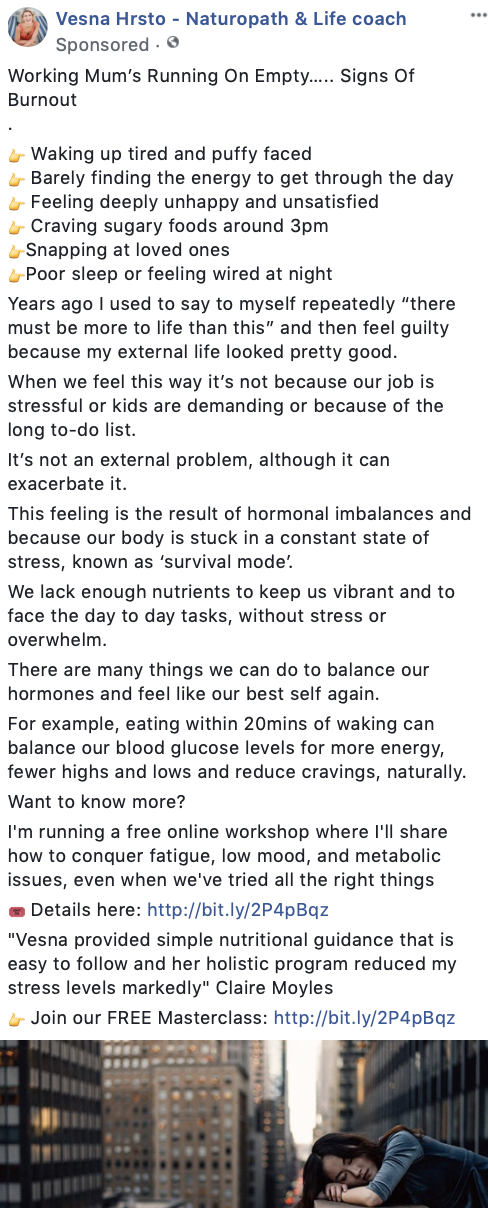
For instance, are you selling costume jewelry for cheap prices? Talk about how people can finally get beautiful, decent-quality jewelry at affordable prices, because this will hit home to your target audience who can’t afford to drop a month’s salary on a diamond tennis bracelet.
If you’re trying to advertise your air conditioning services, make sure you talk about the risk of an old unit blowing out and how it always happens on the hottest week of the summer, leaving you to sweat through sleepless nights and wondering if you’ll ever feel cool again.
These are emotional messages and by centering a customer’s pain point, you can then immediately follow up that thought by presenting your product as a solution. This last part is important, and it’s where a lot of advertisers and copywriters make the mistake of forgetting to hammer in the point about how they can fix their customer’s problems.
Instead of just saying:
“Hate that humid, summer-heat feeling? AC units always burn out on the hottest week of the year, and it can take up to two weeks to get on the schedule for someone to fix it.”
Make sure you’re finishing it off with:
“We can help with that. Call us for a free estimate about how our Turbo Deluxe model is more reliable, with a two-year, no-burnout-guarantee or your money back, and same-day service.”
That last part of the equation is essential.
Emotional ads are pretty much always a good call for B2C ads, though they can work just as well on B2B ads, too.
Learn More:
- 30 Winning Facebook Ads and Why They’re so Effective
- 9 Rules for Creating Ads that Convert
- 6 Facebook Ad Hacks Crushing It in 2019
- How to Create a Facebook Video Ad that Gets Attention
- How to Write Hero Headlines to Skyrocket Click-Through Rates
3) Write Mobile-Optimized Headlines
In past years, advertisers were focusing predominantly on desktop users, knowing that these people were more likely to convert.
This is a changing trend, however, especially since 88% of Facebook users regularly access the platform via their mobile device. Mobile ad revenue and engagement continues to climb, so you need to consider mobile users when writing your ad copy (unless you’re writing exclusively for desktop-only placements). Since focusing on desktop can isolate a large percentage of your target audience, it’s often best to just mobile-optimize your ads and go from there.
Short headlines are an important part of those mobile-optimized ads. You can get 52 characters under the current ad formatting before the headline gets chopped off with an ellipses, and since the headline plays a major role in ad copy, you don’t want this to happen.
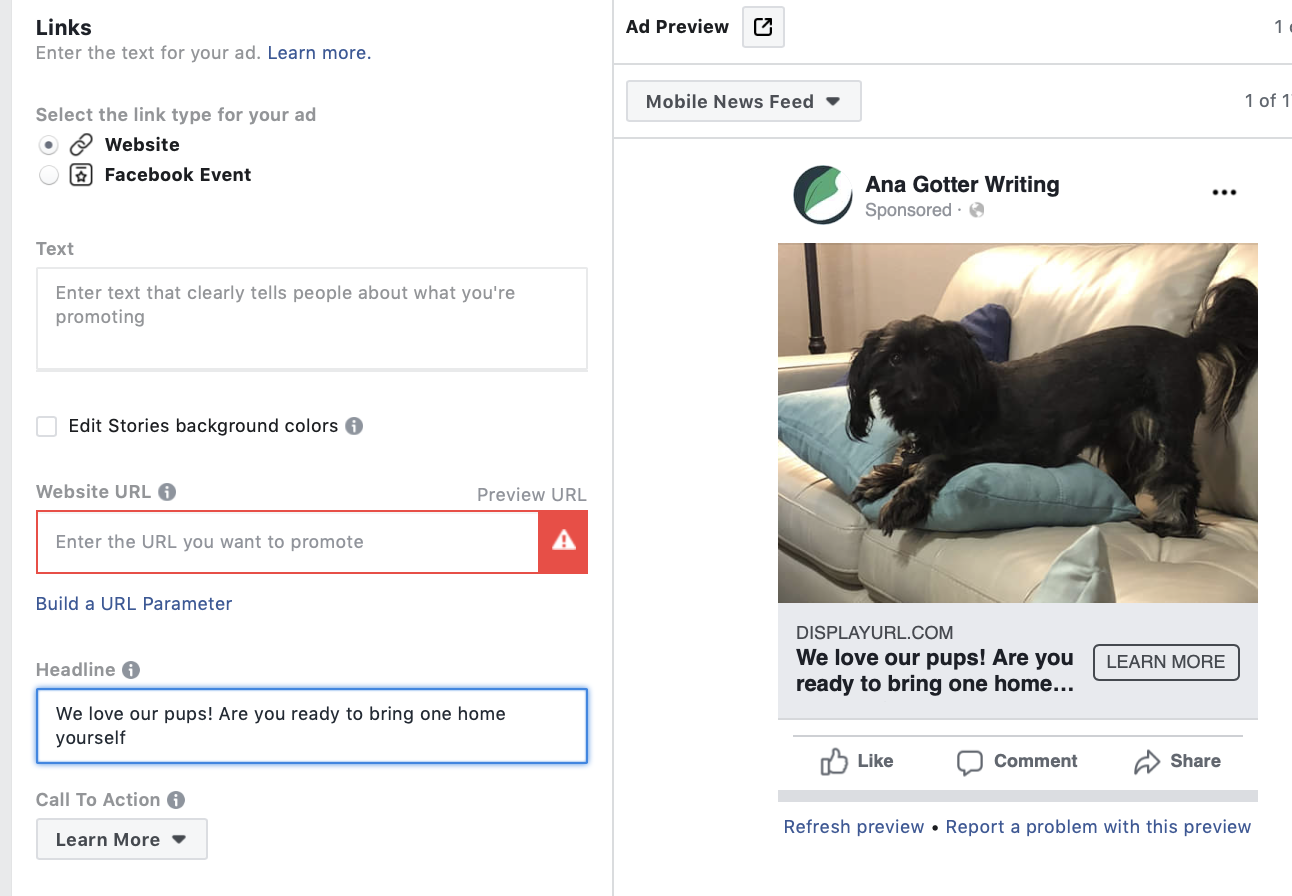
Keep the headlines short and make sure that they’re impactful. Think of this as your chance to create clickbait-worthy titles (but not actual clickbait!) to catch people’s attention.
When it comes to headlines, you can stick to a few simple formulas if you’re feeling stuck and adapt them as necessary. They are:
- Adjective. Adjective. Adjective. (Delicious. Decadent. Still healthy.)
- Are you tired of/frustrated with [pain point]? (Tired of not sleeping well?)
- General call out to customers. (You asked. We delivered.)
- Specific feature statement. (Prevent package theft, as seen in the example below).
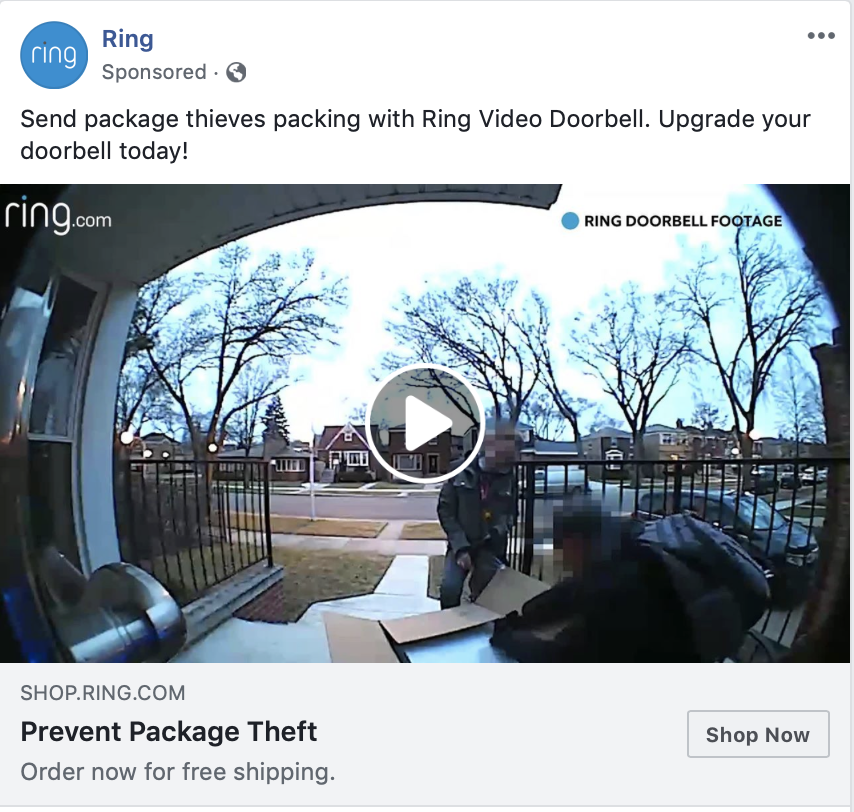
Dive Deeper: How to Produce Paid Facebook Video Ads for Mobile Like a Pro
4) Tell a Compelling Story
I’ve said it before, and I’ll say it a million times more: Stories are incredibly powerful.
Stories are emotional, which already ties in well with the ad strategies discussed above, but they’re also memorable and specific and relatable. These are crucial pieces in the advertising puzzle that can set off buying triggers in customers during the research and consideration stages.
And when it comes to storytelling in Facebook Ads, you can stay simple, but the more specific you get, the better. Tell stories about individual customers, explaining how they’ve benefited from your product. Or share what made your company’s founder decide to start the brand.
Let’s look at an example. Raddish Kids has a meal subscription box for kids, but this ad (it features a client review, which we’ll discuss shortly) tells the highly specific story of a single parent and their 9-year-old daughter, Ella:
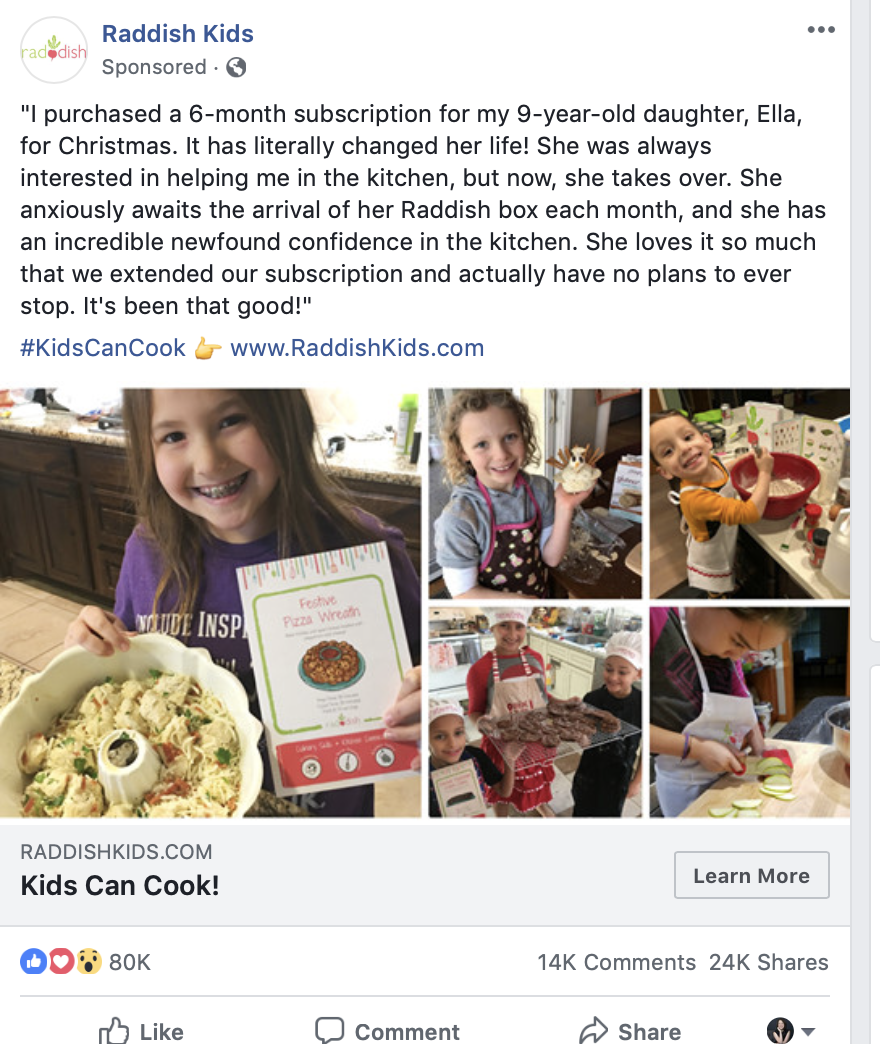
They don’t just say:
“Hey, she cooks.”
They’re talking about how:
“she anxiously awaits the arrival of her Raddish box”
And:
“she has incredible newfound confidence in the kitchen”
Parents can relate to how their kids gain confidence with new skills, and see how this could impact their own families.
Stories sell, and even if users don’t click or convert the first time they see your ad (which, let’s be real, they’re statistically unlikely to do), they’ll remember the story you told and, hopefully, convert in the future.
5) Turn a Testimonial into Your Ad Copy
If you are struggling to get your ads moving, you should create several campaigns dedicated to highlighting real customer reviews. Notice that I stress real – customers can tell when a review is written by the company itself, no matter how clever you think you’re being.

An incredible 97% of consumers say that online reviews will impact their buying decision. Facebook Ads can garner plenty of social proof from happy customers, but why not start strong right off the bat by featuring the testimonial in your ad text?
In this case, I highly recommend split testing several different reviews and see which gets you the most results. In many cases, it will provide valuable insight into a customer’s needs. If one review is talking about how comfortable your clothes are but doesn’t convert as well as the review from a woman overjoyed that you have plus sizing that finally fits her, then you’ve found a big pain point that you should exploit in other ad campaigns.
Learn More:
- How to Get as Many Testimonials as Possible from Your Customers
- How to Easily Set Up a High-Conversion Facebook Retargeting Campaign
- How to Write Lead Nurturing Content: 7 Proven Tactics
- 3 Advanced Ways to Write Content that Converts
6) KISS: Keep It Skimmable, Stupid
Use simple, basic sentence structures that are easy for your readers to follow. This makes your ad “skimmable” and it prevents the content from looking too overwhelming.
You should keep the subject of the ad simple, too. Give users just enough information to get them to click or convert, but make sure that you don’t have a ton of unnecessary information in there.
In the example below, they just say “World’s Lightest Frame.” They don’t go on and on about actual qualifications for how they achieved this title. It might be interesting, but it adds unnecessary text to the ad that takes away from its purpose, so they kept it simple instead.
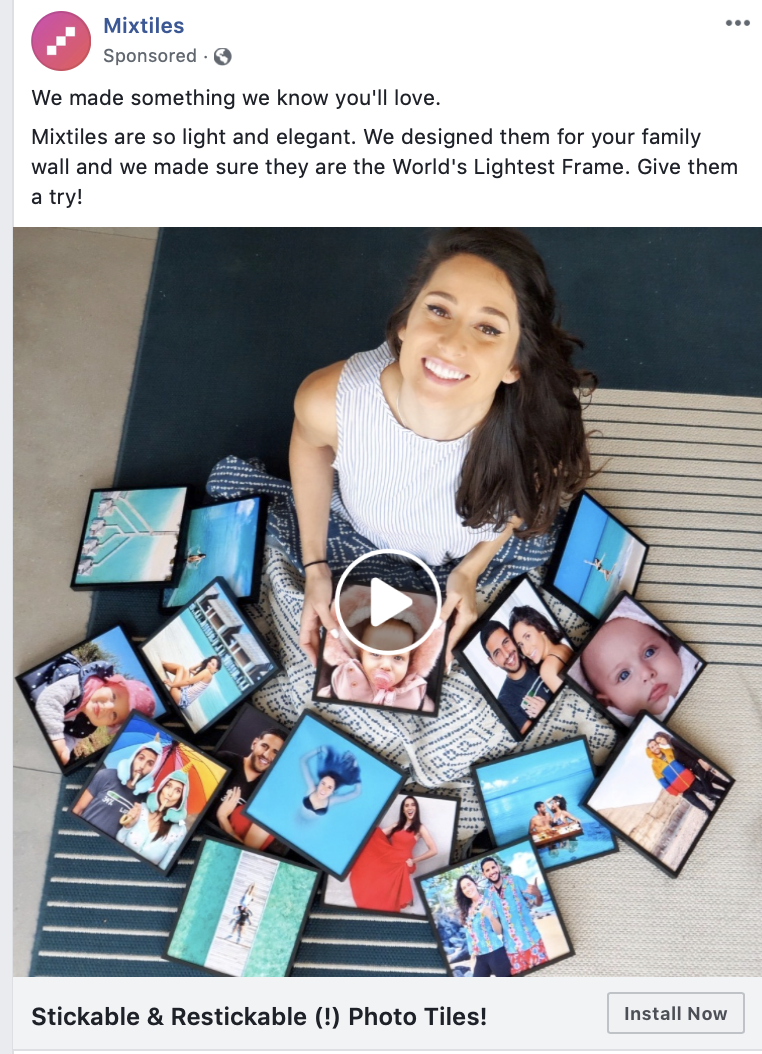
This is another good example of a short, sweet and to the point ad campaign. Some products and services will need a lot more explanation, but if you’ve got something simple to sell, consider sticking to the facts like Tieks:

This does not mean that you should automatically discount long-form copy, which can be effective, but you need to keep that simple, too. Long-form copy is more difficult to write, because the balance of enough text to be useful without too much to distract can be hard to strike. Make sure that if you do opt for long-form ad content, you immediately start off with a big-impact statement, like “I Build Superheroes” in the ad below:
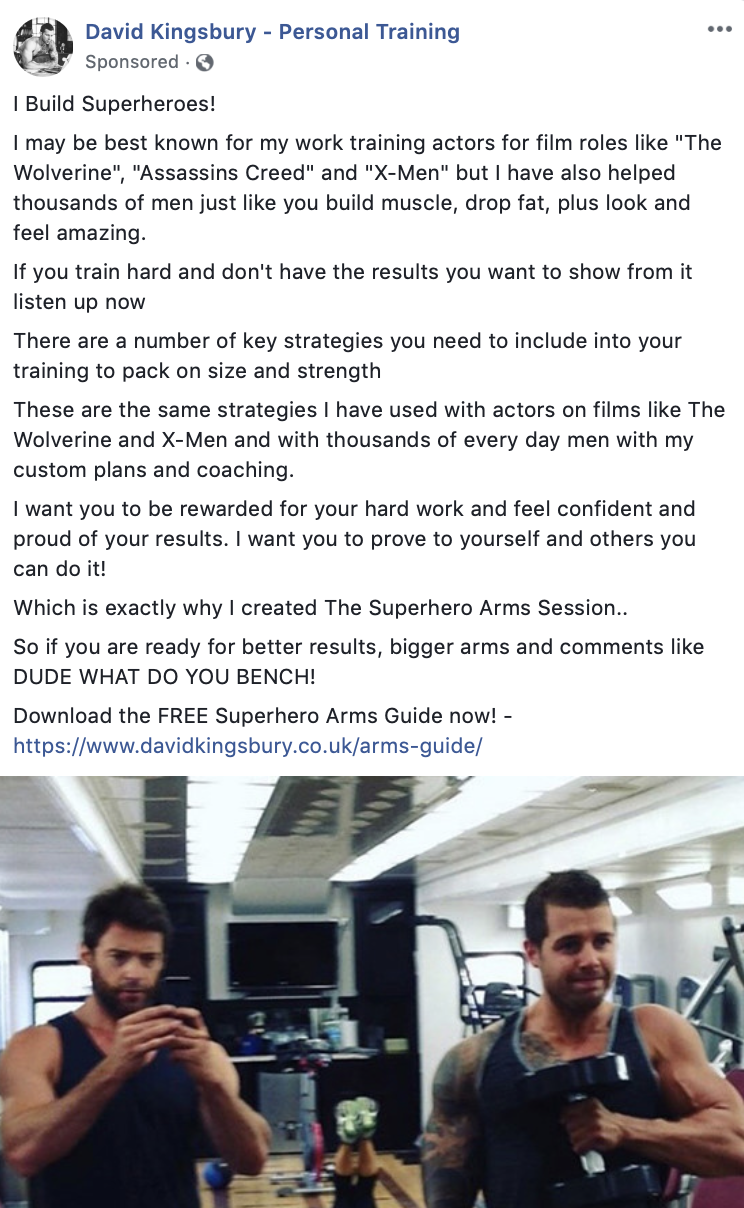
7) Overcome Objections in Your Ad Copy
Many people will immediately ask themselves “What’s the catch?” as soon as they see your ad. They can’t help it; we’re all naturally skeptical, and consumers have gotten smarter and more discerning over the years, so they’re less inclined to believe you straight away.
This means that overcoming objections in your ad copy is a good call. Do your prospects dislike that your competitor’s straighteners break their hair and cause split ends, but your brush does no damage? Mention that!
The overcoming objections strategy is a great way to put customers’ fears at ease (before they can even ask what the catch is), address pain points, and make yourself look better than your competition without even naming them.
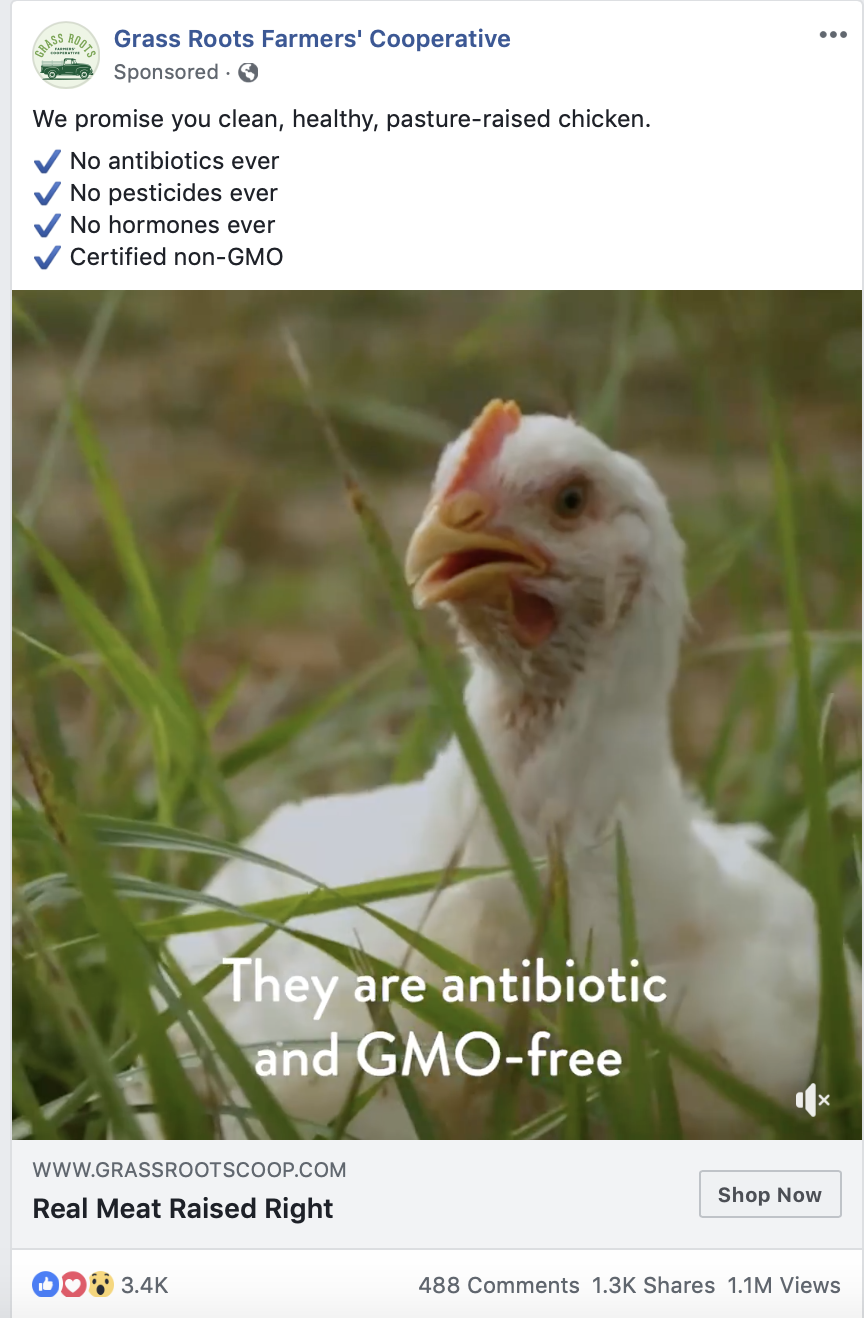
Learn More:
- 13 Best Super Bowl Ads of all Time: What Your Business Can Learn from Them
- How E-commerce Companies Can Boost Sales with Facebook Ads
- Beginner’s Guide to Facebook Marketing
8) Test, Test and Test Some More
When I sell ad copy packages to my clients, I typically don’t sell single ads. Instead, I sell sets of copy, which include multiple headlines and variations of ad text that all align under a single strategy or pain point, but use different styles, messaging, stories and even offers to see which copy formats work best. Some may have bullet points, others may be two lines, and another may be six paragraphs.
This is valuable because Facebook audiences can be fickle, and the only way to find out what yours wants to see is by testing different strategies, different styles, and different offers on a regular basis.
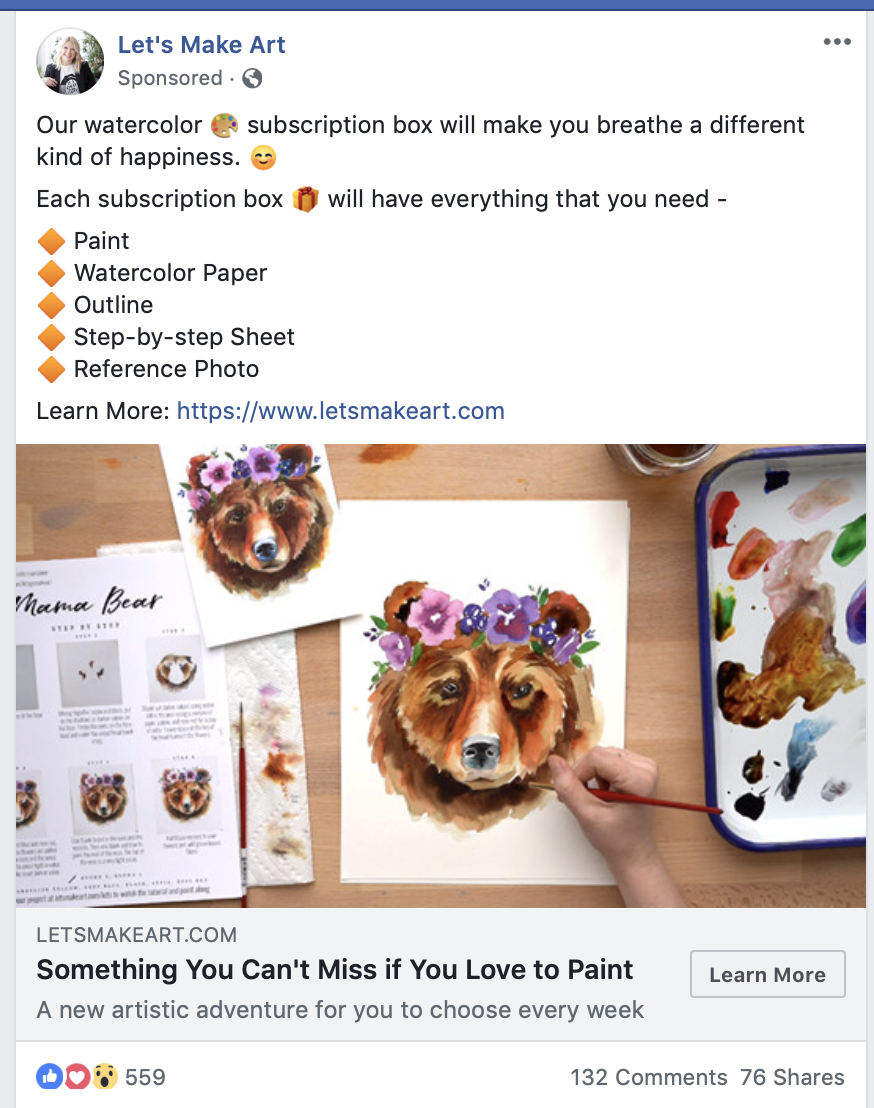
Don’t overlook split testing, even though it’s more of a financial and time investment, because it will have a huge impact on your profitability moving forward. You don’t ever want to settle for “good enough,” after all. I’ve seen “good enough” campaigns that turned into hugely successful campaigns, increasing conversion rates by up to 35% – after dedicated split testing to discover what worked best for each audience.
And now Facebook Ads makes this easy! You can select the Facebook Ads native split testing option, and then choose to test multiple variations of ad copy.
Conclusion
When you’re approaching Facebook Ads copy, it’s important to remember that it’s unlike other ad types. Google Ads typically focuses on highlighting the features that are most likely to get users to click, sometimes without any complete sentences, because users are searching for that product or service instead of just seeing it show up.
You need to consider that your ad is an outbound marketing technique and that it therefore needs to captivate users enough to draw them in. The right copy will be engaging enough to grab their attention and persuasive enough to get them to click, and these 8 tips can help you write it.
The post 8 Facebook Ad Copywriting Tricks to Maximize Conversions appeared first on Single Grain.
from Single Grain http://bit.ly/2WjX2sk
April 2019 Top 10: Our Most Popular Posts
What follows are the most popular articles that we published in April 2019, recognizing that posts published earlier in the month are more likely to make the list than later ones.
The post April 2019 Top 10: Our Most Popular Posts appeared first on Practical Ecommerce.
from Practical Ecommerce http://bit.ly/2XZTH1Z
Facebook details Messenger updates: New desktop app, social video, and Project LightSpeed

Facebook has given a glimpse into some of the things it's cooking up for Messenger, including a new desktop app, social video, and lightweight mobile app.Read More
from Social – VentureBeat http://bit.ly/2ZKmYiL
How to watch the Facebook F8 2019 stream

Facebook's F8 2019 developer conference runs between April 30 and May 1. Tune in to watch the event stream and livestream for both keynotes.Read More
from Social – VentureBeat http://bit.ly/2GKRPTA
Try These 5 Agile Marketing Values to Sharpen Your Content Process
Want your content marketing program to be more successful? Don’t be oblivious to process. Get your hands dirty by exploring and optimizing the process of content marketing. And here’s how to begin – with some Agile thoughts. Continue reading →
The post Try These 5 Agile Marketing Values to Sharpen Your Content Process appeared first on Content Marketing Institute.
from Content Marketing Institute http://bit.ly/2vsTkR5
Monday 29 April 2019
WordPress 5.2 RC, Site Health Check feature, release WP CLI 2.2
Did you know you update plugins, configure multisite installations and much more, without using a web browser? You can with a tool call WP CLI and it saw a big update. WordPress 5.2 saw its Release Candidate, well, released, and there’s a fun CSS related bonus link this time. Let’s dive in!
WP CLI 2.2 released
WP CLI is the command line interface tool for WordPress. With this plugin, you can do all kinds of exciting things inside of WordPress, but instead of using the browser, you can use the command line. This last week saw the release of the 2.2 version. Alain Schlesser had this to say about it:
Although there are not that many new features, we had a lot of work being done behind the scenes, to make future releases smoother. A lot of the processes have been improved, and we’ve managed to squash quite a few bugs while doing so. A team of 57 contributors has collaborated on this release to get 347 pull requests merged
Alain Schlesser
You can read more about it in the full release post. And, if you’ve never worked with WP CLI, then learn more about it and check if your web host has it installed. Most of the hosts on our WordPress Hosting page have it preinstalled.
WordPress 5.2 introduces the Site Health Check feature
One of the cool new features of WordPress 5.2 is the Site Health Check. This feature will add two new pages in the admin interface to help end-users to self-service their site through common configuration issues. It also provides a standardized location for developers to add debugging information.
The new pages can be found under the Tools menu, as Site Health, and presents the user with a new admin interface. One that you’ll want to continue to use in the future. If you’re building plugins or themes, there are really neat ways to interact with this new Site Health Check feature.
WordPress 5.2 Release Candidate
The first Release Candidate (RC) for WordPress 5.2 was released three days ago and with its release, we should expect the final release to be in about two weeks later.
A first RC also marks the moment when no new text strings are to be introduced. Also knows as a hard string freeze. If you speak any other language besides English, please help us translate WordPress into more than 100 languages!
Bonus link
This edition’s bonus link is for all you CSS warriors out there. Tobias Ahlin wrote about how to create masonry layouts with CSS only, using flexbox, nth-child() and order and think it’s pretty neat! He put a lot of thought and experimenting into getting it working, so check it out!
The post WordPress 5.2 RC, Site Health Check feature, release WP CLI 2.2 appeared first on Yoast.
from Yoast • SEO for everyone http://bit.ly/2GOby54
35+ Stunning Examples of Websites Using Squarespace
As a follow up to a previous post, in which we took a look at the differences between Squarespace and WordPress — and in parallel to another of our previous posts, in which we had a look at 50 Notable Examples of Extremely Famous Brands Using WordPress — we figured it might be fun to... View Article
The post 35+ Stunning Examples of Websites Using Squarespace appeared first on WinningWP.
from WinningWP http://bit.ly/2ogOxj7
New Borderlands 3 Twitch extension earns you in-game loot 4 months before release

The Echocast Twitch extension allows viewers to inspect a streamer's Vault Hunter profile, including their weapon loadouts and inventories.Read More
from Social – VentureBeat http://bit.ly/2J3dbyc
MQL vs. SQL – Serve Up The Right Type Of Content To Your Leads
Lead generation is the holy grail of marketing efforts. Every marketing campaign, across all mediums, is targeted towards generating leads in an effort to bring in new customers. After all, that’s the lifeblood of your business.
Unsurprisingly, when marketers observe public interest in what they have to offer, they deem the work done from their side. The great misconception about leads is that, well, all leads are the same.
That’s where the catch lies. They are not. As great as your marketing efforts or campaigns might be, they hold a different value for each of your prospective clients. This is why MarketingSherpa found that 61% of B2B marketer send all leads directly to sales; however, only 27% of those leads are qualified.
In a typical consumer journey, leads can be categorized into two broad types: marketing qualified leads (MQL), and sales qualified leads (SQL). Each type requires exposure to different types of content to nurture them into the next stage of the buyer’s journey.
MQL vs. SQL – What’s the Difference?
Distinguishing an MQL from an SQL is an important relationship between sales and marketing. This initial step of differentiating one from the other is the ultimate foundation for the lead hand-off.
Marketing qualified leads are at the stage that precedes the normal lead level, inferring that the lead is more likely to become a customer. Knowing which lead is qualified to be classified as an MQL is determined by the organization’s lead intelligence, which tracks specific behavioral and engagement characteristics as shown by previously successful leads.
This can be determined by a repeated interest in the content of your website or engaging with a sales-related CTA. However, remember that they are not willing to buy from you just yet; that will require further nurturing.
A sales qualified lead is typically at the stage that supersedes the MQL. It has been identified as prepared to buy and fits into your ‘buyer’ profile — so the core difference between the two lies in the intention and readiness to buy your product.
Dive Deeper:
- How to Write Lead Nurturing Content: 7 Proven Tactics
- How to Excel in Lead Nurturing: A Quick Guide for Digital Marketers
- 4 Ways to Use Automation with Account-Based Marketing for Better Lead Nurturing
- Turning a Lead into a Prospect with MOFU Content
- How to Create Better-Converting In-Content Calls to Action (CTAs)
What Type of Content Do You Need to Nurture Leads into the Next Stage?
According to another study by MarketingSherpa, 79% of marketing leads never convert to sales. Lack of lead nurturing is the primary cause of poor performance in this regard.
As content marketing continues to provide unparalleled lead generation value for organizations, its potential as a lead generation tool means it can be leveraged to nurture leads further in the conversion funnel.
The average cost to generate a lead through inbound marketing ($143) is about half the average for outbound marketing ($373).
Click To Tweet
Different leads exhibit different perceptions and understanding of your product. As a result, the content should also be customized according to the buyer’s stage in the conversion funnel:
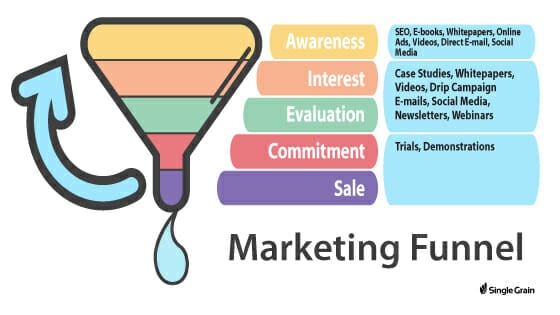
What Content to Display To MQLs
While MQLs do portray a level of trust that is more enhanced than a normal visitor, they are still not adamant about converting. Although they realize that they are experiencing a problem, they are yet to be convinced of your capability to be the solution.
Your content should be customized towards nurturing marketing qualified leads into sales qualified leads. Here are a few examples of content types that should be visible to MQLs.
1) Targeted Email Campaigns

Emails have an ROI rate of 4400% ROI ($44 for every $1 spent). For years, marketers have used emails to convert interested visitors into guaranteed leads effectively.
When dealing with MQLs, marketers are aware of the consumer’s heightened interest, which means that they don’t need to lure customers into the sales funnel and can therefore risk being more straightforward.
Tailored email campaigns are designed to touch the consumer’s pain points – problems that currently engulf their organization or business – and display an intent of solving them through what you have to offer.
Dive Deeper: How to Get More Responses From Cold Emails
2) Case Studies
A case study can be defined as an in-depth analysis of a project, campaign or organization and its journey from identifying a problem, the search for a solution and corresponding implementation of the selected solution – all to analyze the result of such solution on the failure or success of the project or campaign.
Marketing case studies are important in the sense that they advocate for your product or service through means of social proof.

In a case study, you are required to meticulously analyze the reasons behind the success of one of your past campaigns or client partnerships, where you provided an effective solution.
You effectively analyze a consumer journey from the root, beginning from the problem and the consequences that stemmed from the problem, all the way to provide a lasting solution that put an end to the complications.
For MQLs, case studies provide a relatable experience with regards to the insights into the problems and spark interest through establishing your product as the solution.
According to Marketing Charts, case studies help convert and accelerate the most leads in B2B settings. Successful case studies not only portray your capability to efficiently solve the customers’ problems, but also provide a detailed insight into the problems that can help MQLs relate.
Dive Deeper: Single Grain’s Twenty20 Case Study
3) In-Depth Blog Posts
Value creation is the modern pathway to lead generation. Modern-day marketing revolves around the creation and provision of value to the consumers. In fact, the level of value inferred through content has been the principle reason behind the meteoric rise of content marketing.
You can risk ruining the potential of the lead with in-the-face marketing gimmicks. Content marketing tactics such as in-depth blog posts, on the other hand, provide evidence of your authority and expertise that helps shape a consumer’s decision.
In-depth blog posts that span over 2,000 words provide ample ground for you to not only delve deep into the complications and issues often faced by the consumers in your industry niche, but also allow you to provide a glimpse of your firm grasp of the subject matter as you continue to provide answers to their queries.

Advancing technology, such as modern-day marketing CMS, has further streamlined the content creation process, which makes it easier for marketers to create, edit and publish detailed posts for maximum exposure.
Dive Deeper: Absolutely Everything You Need to Know About 10x Content
4) White Papers
What is a white paper? The definition of white papers differs from industry to industry. While legislative white papers are technical pieces of content that are prepared for major purposes, marketing white papers are quite the contrary.

According to HubSpot, “a whitepaper is a persuasive, authoritative, in-depth report on a specific topic that presents a problem and provides a solution.” The pedigree of white papers as a lead generation and lead acceleration tool has been long established.
Content Marketing Institute’s 2018 content marketing survey found that white papers were the most effective type of content used by 62% of the most successful respondents:

Informational, lengthy and comprehensive – white papers provide unparalleled insight and industry knowledge and tackle tougher obstacles faced by the industry in general. MQLs who are perplexed about conversions benefit greatly from the insight and proficiency on display on a white paper.
Dive Deeper: How to Boost Lead Generation and Authority with White Papers
What Content to Display to SQLs
Sales qualified leads are in a more advanced state than MQLs, and therefore much more clear in their pursuit of your product.
Through a variety of behavioral triggers and analysis, not only have they acknowledged the presence of a problem, but they have also identified you as a probable solution for such a problem.
While the impact of quality salespeople on the team cannot be denied, tailored content can lay the groundwork for your sales team to guarantee the lead conversion. Their intent to convert and buy is the core emotion that your content should look to target.
In stark contrast to the content that suits MQLs, which is replete with value creation and how to showcase your authority in your industry, content for SQL should be focused on encouraging them to convert easily.
Click To Tweet
Social proof and incentives are the primary highlights of the content that should be tailored for SQL. Here are a few examples:
1) Testimonials
The epitome of social proof is the consumer testimonial. From Amazon to Alibaba, every website that sells something leverages the power of social proof. Approximately 89% of customers find testimonials highly effective in assisting them with their decision:

Positive testimonials are glowing (and real) accounts of consumers who have benefited from using your product and collaborating with you. When SQLs come across such testimonials, they are provided with a reassuring boost that they have made the correct decision by showing the intent to buy from you.

Dive Deeper: How to Get as Many Testimonials as Possible from Your Customers
2) Product Demos
While social proof helps push the consumer further across the funnel, it is only when they get to try the real thing that all their doubts vanish and establishes you as the perfect choice.
Not only is a product demonstration an insight into how the product works, but it effectively conveys your confidence and level of dedication to your consumers.
In addition to showing the prospect the quality of your offering, the commitment to let the consumer assess whether they need the product or not goes a long way in actually tilting the buying decision in your favor.

3) Free Trials or Coupons

Incentives drive emotional cues, which in turn determine consumer behavior. Study after study has documented the effects of positive and negative incentives on human behavior.
Free trials and discount coupons present the perfect incentive to ‘push’ sales qualified leads to convert. People who are qualified as SQLs are actively interested in your product and have shown a desire to convert.
By providing them with a discount coupon or a free trial, you are either giving additional monetary benefit for something they were already inclined to do (hence, a greater motivation to convert) or you are providing them with a chance to alienate their fears regarding how the product might be.
In either scenario, that is a win-win situation for both the SQL and you, the marketer.
4) Product or Pricing Sheets
A consumer’s decision making is dependent upon a variety of factors, but none so important as the price. When the consumer is nearing their decision, it is imminent that they will look for supporting factors that help cement their choice.
By providing sales qualified leads with pricing sheets, businesses are effectively helping consumers conclude the buying process.

The Importance of Efficient Lead Nurturing
Leads are to business what gas is to vehicles; there is simply no sustainability for a business that’s deprived of leads. However, the number of leads generated does not automatically mean that all of the leads are being converted.
Despite all efforts, 75% of companies and 69% of marketers state that converting leads into customers is their top priority.
At the end of the day, businesses are not judged by the number of people who show interest in what you have to offer, but by the number of people who show an intent to buy and your efficiency in closing deals with such consumers.
Lead nurturing allows businesses to convert MQLs into SQLs (who have a higher probability of converting). And subsequently, converting SQLs into customers requires careful nurturing and exposure to marketing campaigns that have been devised for that specific stage in the conversion journey.
Lead nurturing can be done in a variety of steps, including:
1) Drip Campaigns

Drip campaigns are carefully designed, often automated email campaigns that aim to drive conversion. These emails can be varied based on triggers or actions the person has performed. This can differ from buyer stage to buyer stage, such as signing up for your service or making a purchase, which is why they’re also sometimes called behavioral emails.
Dive Deeper: How to Use Personalization to Increase the Impact of Email Marketing
2) Newsletters

Regular newsletters not only ensure that consumers remember you, but provide a steady flow of fresh and innovative information that interests and engages the client. In the case of an SQL, newsletters can provide supporting evidence that confirms their decision to convert.
Dive Deeper: Beyond the Newsletter: You’ve Got Their Email, Now What?
3) Offer Q&A Support
Whether prospective clients are in the MQL or SQL stage, they are full of questions. By having an active Q&A support, an organization can not only provide valuable answers to the consumers, but their dedication is bound to build a rapport that boosts lead conversions.
Key Takeaways
Not all leads are created equal. Properly nurturing leads all the way to conversion requires correct identification and further exposure to content that is designed to help the consumer realize that you are the one that can solve their problems.
MQLs and SQLs represent different stages in the buyer’s journey. The content that organizations serve to them should reflect their difference in perspective and intention in order to mold their opinion and push them towards conversion.
The post MQL vs. SQL – Serve Up The Right Type Of Content To Your Leads appeared first on Single Grain.
from Single Grain http://bit.ly/2Vydw2x
Need More from Email Marketing? Learn from Competitors
Email marketing provides a strong return on investment, requires very little money, and helps even fledgling businesses drive sales. The question, then, for most businesses is not whether they should use email marketing, but how. One strategy is to monitor successful competitors.
The post Need More from Email Marketing? Learn from Competitors appeared first on Practical Ecommerce.
from Practical Ecommerce http://bit.ly/2XSozRR
Facebook lets select researchers access ‘privacy-protected’ data

Facebook today announced that 60 researchers from 30 academic institutions will gain access to 'privacy-protected' data for the purpose of academic study.Read More
from Social – VentureBeat http://bit.ly/2UItG56
17 Instagram Accounts for Design, Color, Illustration, More
Here is a list of Instagram feeds to follow for all aspects of web design, including color, illustration, animation, photography, typography, and storytelling. The accounts are from independent designers and artists, design studios, and creative ad agencies.
The post 17 Instagram Accounts for Design, Color, Illustration, More appeared first on Practical Ecommerce.
from Practical Ecommerce http://bit.ly/2vu6Zax
How to Stand Out in an Overpopulated World of Content Marketing Experts
A lot of people live in Expertville. Too few live in the Land of the Visionary. To truly stand out and make a bigger impact, make the move to the visionary world – and be inspired by these real-life examples. Continue reading →
The post How to Stand Out in an Overpopulated World of Content Marketing Experts appeared first on Content Marketing Institute.
from Content Marketing Institute http://bit.ly/2UMoDRb
Sunday 28 April 2019
My plan for surviving a trade war
For most businesses, daily operations do not change based on who is in political power. Companies are primarily affected by their own decisions, not by the government. However, occasionally there are exceptions. Trade policies are an example.
The post My plan for surviving a trade war appeared first on Practical Ecommerce.
from Practical Ecommerce http://bit.ly/2ZHKE7d
Saturday 27 April 2019
25 Top Examples of Incredibly Famous Celebrity Sites Powered by WordPress
Following on from our previous post, in which we listed over 50 Notable Examples of Extremely Famous Brands Using WordPress, we figured it might be a fun idea to also showcase a number of celebrity websites built with/powered by WordPress. Admittedly it may not be the case that any of these celebrities personally chose to... View Article
The post 25 Top Examples of Incredibly Famous Celebrity Sites Powered by WordPress appeared first on WinningWP.
from WinningWP http://bit.ly/2GIXdqb
Friday 26 April 2019
13 Ways to Market Your Business Online
Marketing is about face-time – and in our increasingly fast-paced world, it’s getting harder and harder to be seen and remembered by customers and clients. Being available online is essential, especially in places where new people see you every day.
If you’re thinking about how to market your business online, here are 13 ways to get your name and brand out there. Just remember that although they might seem basic, these ideas can always be built upon.
1) Get Off Your Website (And On To Social Media)
If you are thinking about how to market an online business, having a website should be the top priority right? Wrong.
A large percentage of transactions these days comes from platforms other than websites. At Single Grain, we always talk about having an omnichannel approach, which simply means that you need to ensure that you are leveraging more than one platform. If you aren’t, you’re leaving money on the table.
Instead, you need to create relevant profiles on at least a few social media sites and start interacting with the users there. We offer a full guide to setting up a social media strategy.
If you have a brick-and-mortar business, establish a presence on social media sites like Facebook, LinkedIn, Twitter and Instagram to make sure that people can:
- Submit reviews
- Find information about your business
- Ask questions
- Read your blog posts or product reviews
Dive Deeper:
- Omnichannel Marketing: Using the Content Sprout Method to Overcome Info Overload
- The Beginner’s Guide to Crafting a Highly Effective Social Media Strategy in 2019
- 4 Ways to Acquire Customer Reviews Using Social Media
2) Have Conversations with People
Interaction is the name of the game. You need to be able to address people’s needs or frustrations about your business or your field.
In fact, according to HubSpot, 85% of jobs are filled by networking. Sadly, however, one in four people don’t even try to network. Imagine how much potential for new clients and customers you are ignoring by talking with people.
This is where the above tip comes into play – social media platforms are excellent places to have conversations, from Twitter, Facebook and LinkedIn to Quora, Yelp and Reddit.
Above all, have conversations, not sales pitches. Don’t try to sell – just talk to people. If they are curious enough, they can click through your profile and learn more about you.
3) Leverage Your Brand
Regardless of whether you have a personal or corporate brand, be sure to leverage it. How do you do that?
First of all, make sure that you have a story that is relatable to the audience that you are targeting. For example, here at Single Grain, we offer an Agency Accelerator program that targets people who are starting a marketing agency. These people are usually struggling to get started, so our story of how our CEO Eric took over Single Grain from a negative business to having clients like Lyft is both relatable and has the target market’s desired end result.
Another extremely important part of a brand is building up your trust and credibility. Talking about clients you worked with (if you are allowed to) and having testimonials on your site will help.
4) Talk About Yourself
People go to your website – especially your About page – to find out about your business. Don’t settle for a paragraph of ambiguous words about your goals or mission. Make it real by putting the personal touch on everything you do, and including plenty of mentions of how others describe you.
If you’re looking for good examples, HubSpot created a list of great About pages. Some characteristics of a good About page include data-driven stats, a personal tone and talking directly to the target market.
5) Be Consistent Everywhere Your Brand Goes
You need people to be able to recognize your brand no matter where they are online. Logos and colors help, and so do faces and catchphrases. But you also need to make sure that you are reaching out to your target audience wherever you are. So spread consistent messages and don’t try to rebrand yourself every few months.
6) Start Building a Brand with the Rule of 7
The best time to be establishing your brand is as soon as possible. Even if your future customers are not in a position to be buying from you now, if you aren’t visible right away, you won’t be remembered when they are ready to pay for your products or services. Remember the Rule of Seven: Your brand has to be seen seven times before anyone will remember who you are.
This is also very important from an SEO standpoint as Google’s CEO, Eric Schmidt, said that the Internet is a cesspool but that trusted brands can help: “Brands are the solution, not the problem…. Brands are how you sort out the cesspool.”
So how can you do this? The Content Sprout Method is a great place to start in 2019. This technique starts with a “seed”, which can be one video, one blog post, etc. Next, you have the “sprout”, which is quite simply taking the seed content and creating it in another form. So if you started with a video, now you also have audio for a podcast, which you can transcribe into a blog post. From there you then “pollinate” it by pushing it out to many platforms. That can be an email list or putting ad spend into it.
7) Pay for Promotion
If you’re wondering how to market online, you’ve probably considered paid advertising. PPC is not an SEO strategy per se, but it is an online awareness strategy.
Advertising, especially well-targeted advertising, still serves its purpose, and Internet ads are much easier to track than television or print ads. Experiment with different ad copy, the size and placement of banner ads, and different advertising channels. And be sure to send each ad to one specific landing page. If you aren’t keeping track of your results, you won’t be able to measure or improve them.
It’s no secret that paying for space is getting more and more expensive. Does that mean we shouldn’t use it anymore? No! We wrote a guide to Google AdWords (now Google Ads) or you can watch the video below to learn how you can still crush it in 2019.
8) Create Email Campaigns
An email campaign is a great way to keep reminding former customers who you are, what you do, and what you have to offer. Prospective customers might also use your emails to judge whether they want to do business with you or not. Make sure that there is something your reader can find helpful in each email blast, like a new product, a holiday special, an informative blog post or even a product demo video.
Need some help getting started? We provided a couple of examples of great email structures. Remember that an effective email is an email that adds value to the customer. If your email isn’t providing value, it won’t help increase your conversions.
Dive Deeper:
- Cold Email Templates that Get Responses
- 8 Ideas for Compelling Emails to Send During the Holidays
- Beyond the Newsletter: You’ve Got Their Email, Now What?
9) Give Stuff Away
Free things are music to most peoples’ ears – and that doesn’t always mean giving stuff away. It could also mean having a sale with deep discounts. If you are marketing physical products, it could mean providing an exceptional guarantee to back your products. When selling information products like e-books and courses, try letting people have the first chapter or lesson for free.
In fact, Neil Patel has been known to create content for $30,000 and then give it away for free. He also purchased Ubersuggest for $120,000 and then released it as a free tool. And guess what happened to his traffic? Yup, it skyrocketed. Just focus on creating value.
10) Know What Your Customers Want
Just because you have a great product or service, doesn’t necessarily mean that you know what they want. The best way to discover this is to do a little research and create buyer personas.
Simply put, a buyer persona is a detailed description of your target customer. A fully fleshed out buyer persona includes everything from demographic information to hobbies, and from income bracket to family size – all written as if the persona were a real person.
However, just because your product solves a prospect’s pain point doesn’t mean that he or she will immediately purchase. Originally you will have cold traffic, so you should focus on warming them up. Here is a guide we created on how to target warm, hot and cold traffic.
Dive Deeper:
- Attract the Right Prospects With Buyer Personas (Includes Step-by-Step Templates!)
- How to Implement User Intent to Build an Audience for Your Content
- 4 Steps to Discover Your Ideal Buyer Persona for B2B Marketers
11) Talk About Others
There’s no better way to get someone’s attention online than to flatter them, especially if you send a noticeable amount of web traffic in their direction.
Establish yourself as a fan first by following them on social media, reading their articles (or watching their videos, etc.), and adding your thoughts to the comments section. You can then write blog posts that link to one of their articles (it must be a relevant link, of course, and your own post should be very well written), and share it with them with a note saying how they inspired you.
And don’t forget about flattering the little guy, too – it’s not just the big brands or personalities that are important. Though they will likely become loyal to your business in return, remember that you should be giving without hoping to get anything in return.
12) Work with Influencers
Social sites allow people to share and talk about what is relevant to them. Find the people who are active within your niche and start to spark conversations and build relationships. This is a great way to be seen as an influencer. In addition, create high-quality resources that people will want to link to and tell their friends about.
If some of these influencers are difficult to get in touch with, think about how you can help them. What keeps them up at night? How can you solve one of their problems? Make sure that when you do reach out to them, you are speaking on a personal level. If you want more info on how to carry out these steps, here are 5 hacks to start a conversation with an influence that you can use.
Dive Deeper:
- How to Reinforce Your Customer Acquisition Strategy with Influencer Marketing
- How to Work with YouTube Influencers to Grow Your Business
- How Artificial Intelligence Is Transforming Influencer Marketing
13) Ask People to Talk about You
Encourage feedback, positive or negative, from your customers. Remind them that you will be reading all reviews or survey answers. Treat all your customers with equal respect, even when you disagree with their opinion.
Remember that it is much more expensive to acquire a new customer than it is to maintain a current customer, so focus on how you can make your current customers happy.
In fact, according to a study from SuperOffice:
- 86% of customers will pay more for a good customer experience
- 73% consider it an important factor while making a purchase decision
- 65% find a positive experience with a brand more influential than great advertising
Final Thoughts
There are many more ways to market your growing business online, and much more depth to the thirteen tips listed here, but if you’re overwhelmed and aren’t sure where to start, this blog post will help you.
To learn more about digital or online marketing, check out these guides and articles:
- How to Perform Marketing Competitor Analysis (+ 6 Best Tools Comparison)
- 7 Marketing Strategies that Work to Increase Conversions
- 10-Step Checklist to Digital Branding for SMBs
- The #1 Marketing Strategy for 2019: The Content Sprout Method
- 44 Must-Have Marketing Tools for any Business in 2019
- What Single Grain’s Marketing Focus Looks Like in 2019
- How to Choose the Best Digital Marketing Agency for Your Business in 2019
And if you still need some help, call us for a FREE consultation!
The post 13 Ways to Market Your Business Online appeared first on Single Grain.
from Single Grain http://bit.ly/2GLjKE3



